As parents, we often feel challenged by many things on a day-to-day basis. Just getting out the door can sometimes be a challenge. However, what about the fun challenges? The ones that are inspiring and promote goal-orientated thinking. The ones that push you to try hard, prioritize, and reach. There seems to be a rise on social media of every sort of hashtagged challenge you can think of, from reading a book every week for a year to walking 1000 miles. These are goals that we can set for ourselves, for our families, or even for our communities that can promote a sense of togetherness as we work towards a target. Today, Australian mum-of-two Jacqui from @tiny.adventures.often takes us on a journey of her own tried and tested challenges and explores the benefits of shared family goal setting.
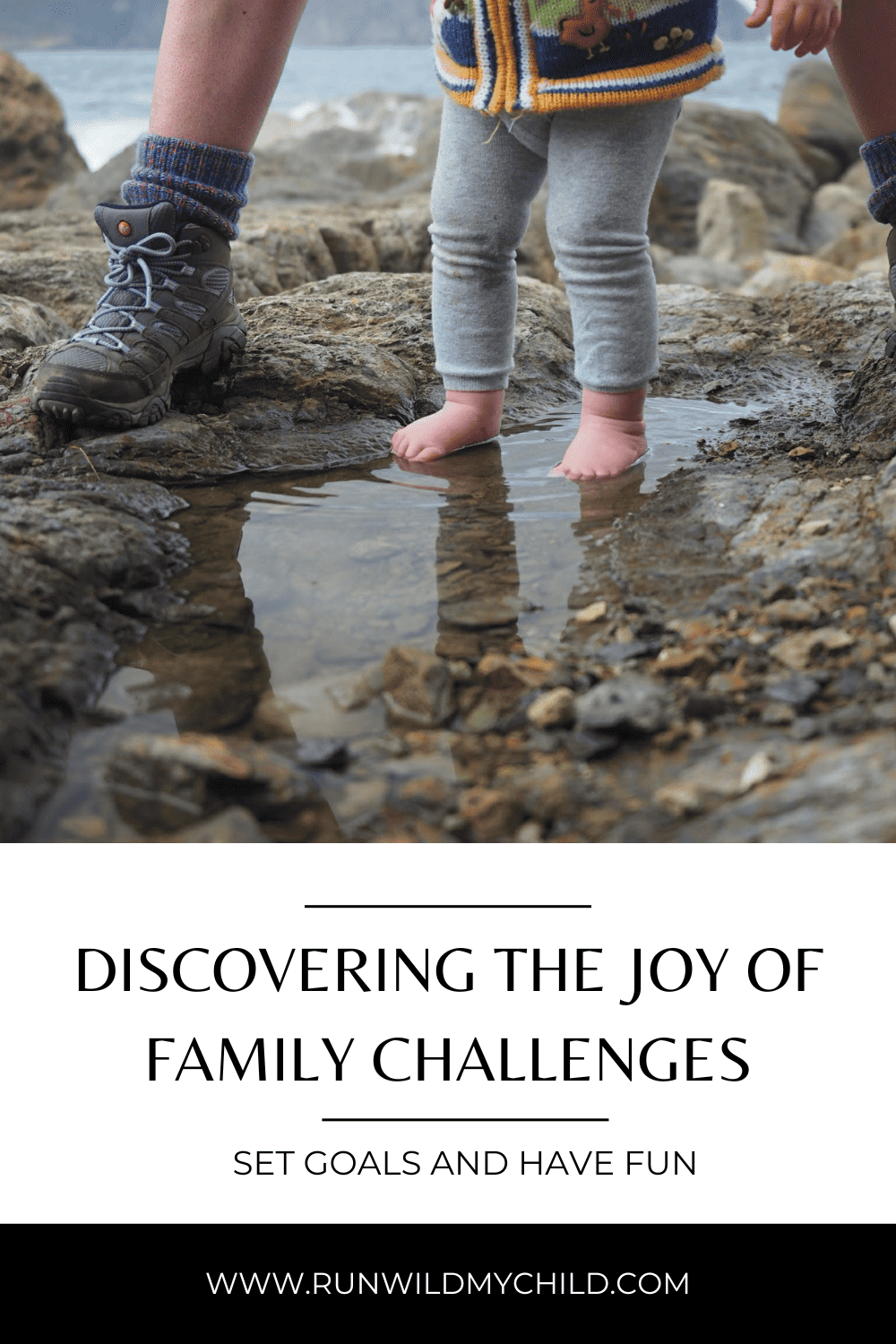
The allure of a year-long goal
Setting a long-term year-long goal can be highly appealing for several reasons, as it offers numerous benefits and advantages. Whether you set a goal or not, time passes either way. Wouldn’t it be great, at the end of 12 months (or earlier), to be able to celebrate reaching a goal? But why a year-long goal? What’s the allure of using such a long time frame?
Well, there are quite a few. A year-long goal provides a clear and tangible target to work toward over an extended period, which is motivating, without short-term intense pressure. Year-long goals encourage gradual, sustainable progress. They often require consistent effort over time, promoting the development of good habits and routines.
Year-long goals are typically well-defined and measurable, making it easier to track progress and evaluate success. This measurement can also provide a sense of accomplishment and satisfaction as milestones are achieved. This gives people a sense of purpose and direction, helping them stay committed to their objectives even when faced with challenges.
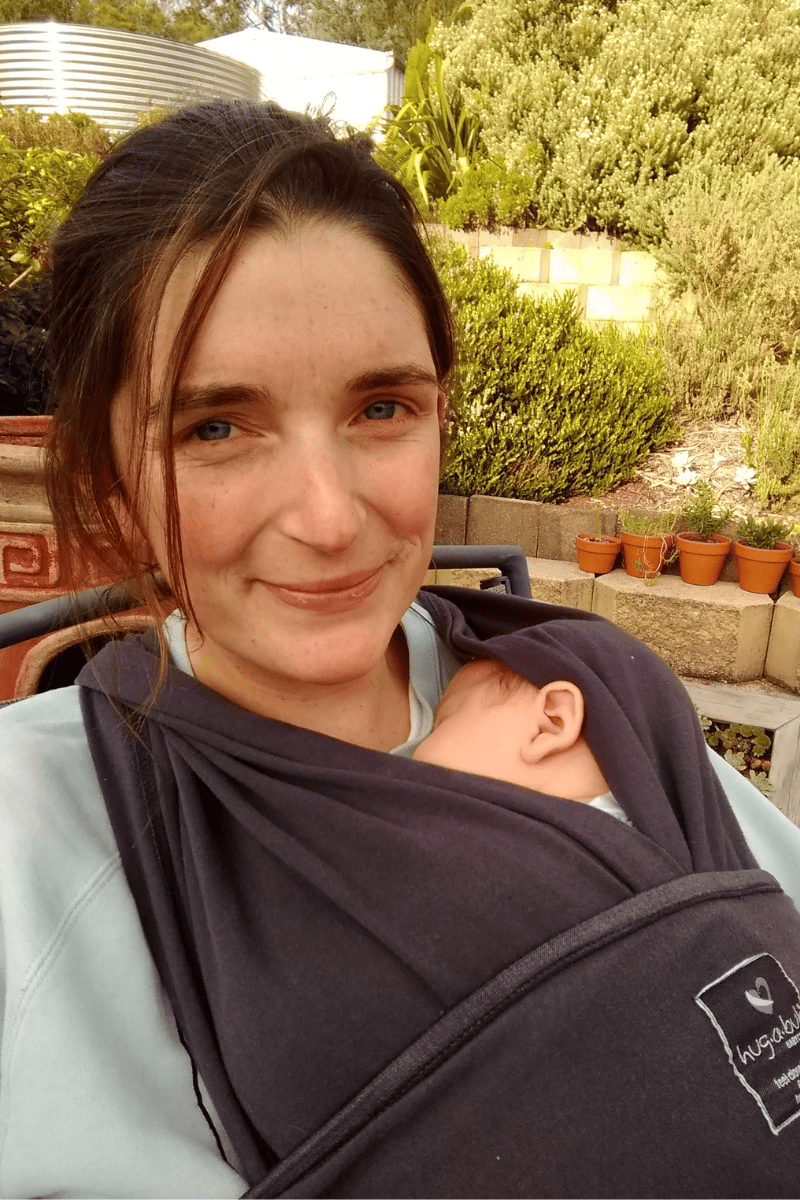
As a new mother, the snuggles are great but the identity crisis is real! @tinyadventuresoften
Where it began for me
For me, I began thinking about year-long goals and challenges around the time I got pregnant with my first child in 2016. When she arrived, I finished up work to be a full-time parent. Leaving the workforce to dedicate my life to keeping a tiny human alive left me with a gap when it came to ambition and personal fulfillment, though. I found that setting myself year-long challenges gave me something to work towards and take pride in.
In the early years, the challenges I set for myself were purely personal. I set a goal to spend 12 months off social media. I did 12 months with no refined sugar. I went 12 months without buying any new clothes. That sort of thing. These challenges were all difficult at various points throughout each year, and I did let myself have a small bit of leeway (like having a piece of wedding cake at a wedding or buying new underwear).
Getting to the end of the year felt fantastically empowering. I did it! I was proud of myself. I felt better. Now, what else can I do?
The goal of getting outside
It wasn’t until 2022 that I stumbled across the 1000 Hours Outside movement, created by Ginny Yurich and vastly popular on social media. The challenge of spending 1000 hours outside with my kids over the space of a year intrigued me straight away. I was already outdoorsy, so I wasn’t sure whether 1000 hours would actually be a challenge or if I would be meeting that goal already without even realising it.
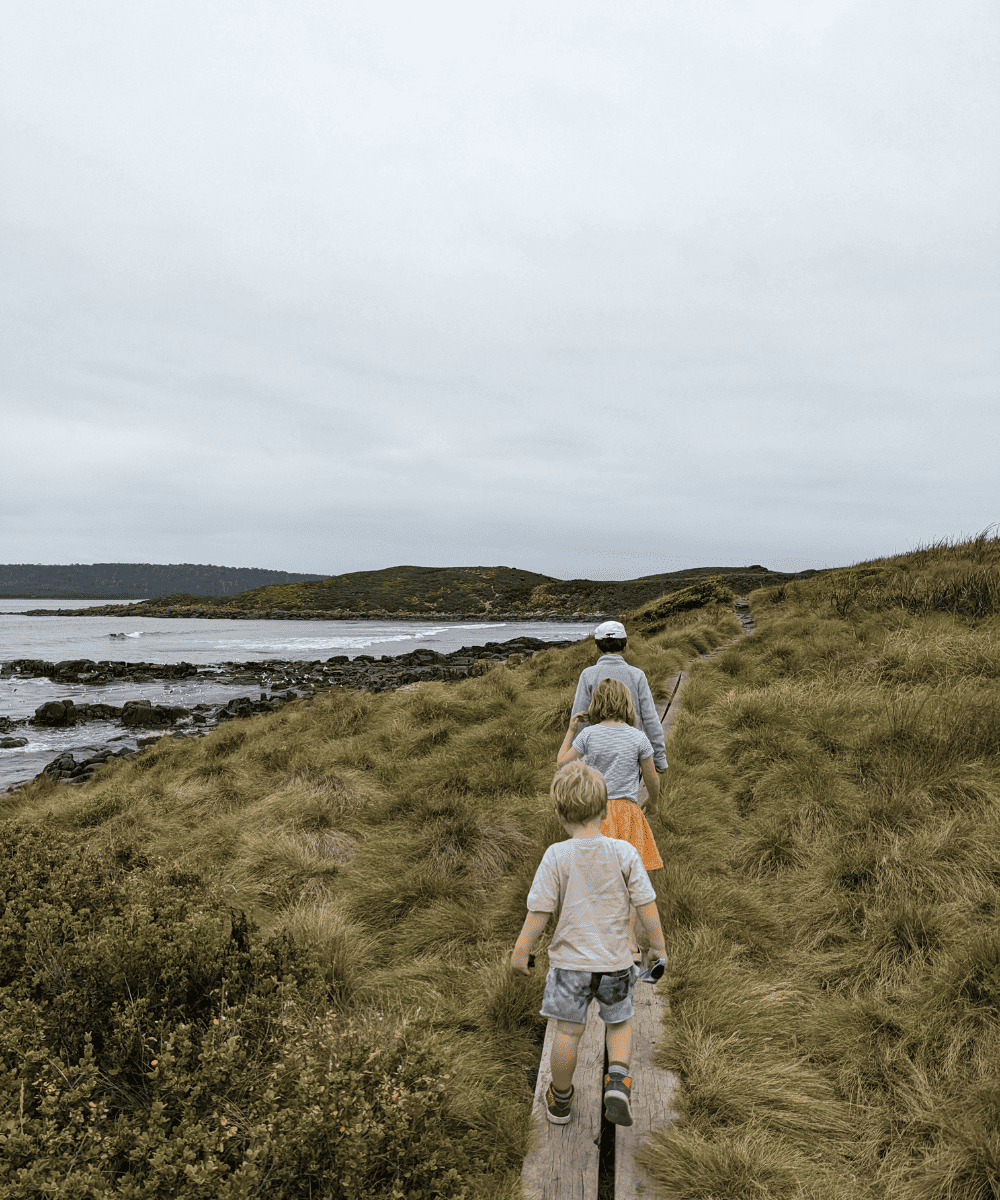
Prioritising spending time outside with the kids (and often with extras) proved to be a lot of fun. @tinyadventuresoften
Spending 1,000 hours outside in twelve months
Almost as soon as I found out about the challenge, I started logging the time my kids spent outside. In a move that might be slightly controversial, I didn’t actually tell my kids the goal that I had set for us. I thought that if I told them the goal, then any time I planned activities outside, they might accuse me of only doing it to ‘get our hours up,’ instead of for the joy and benefits of just being outside.
I wanted them to appreciate each moment for what it was, not just for the destination. The goal was to spend more time outside for the sake of spending time outside, not hitting a number. In hindsight, I think I didn’t give them enough credit. Either way, it worked for us. I planned our days around getting the kids outside.
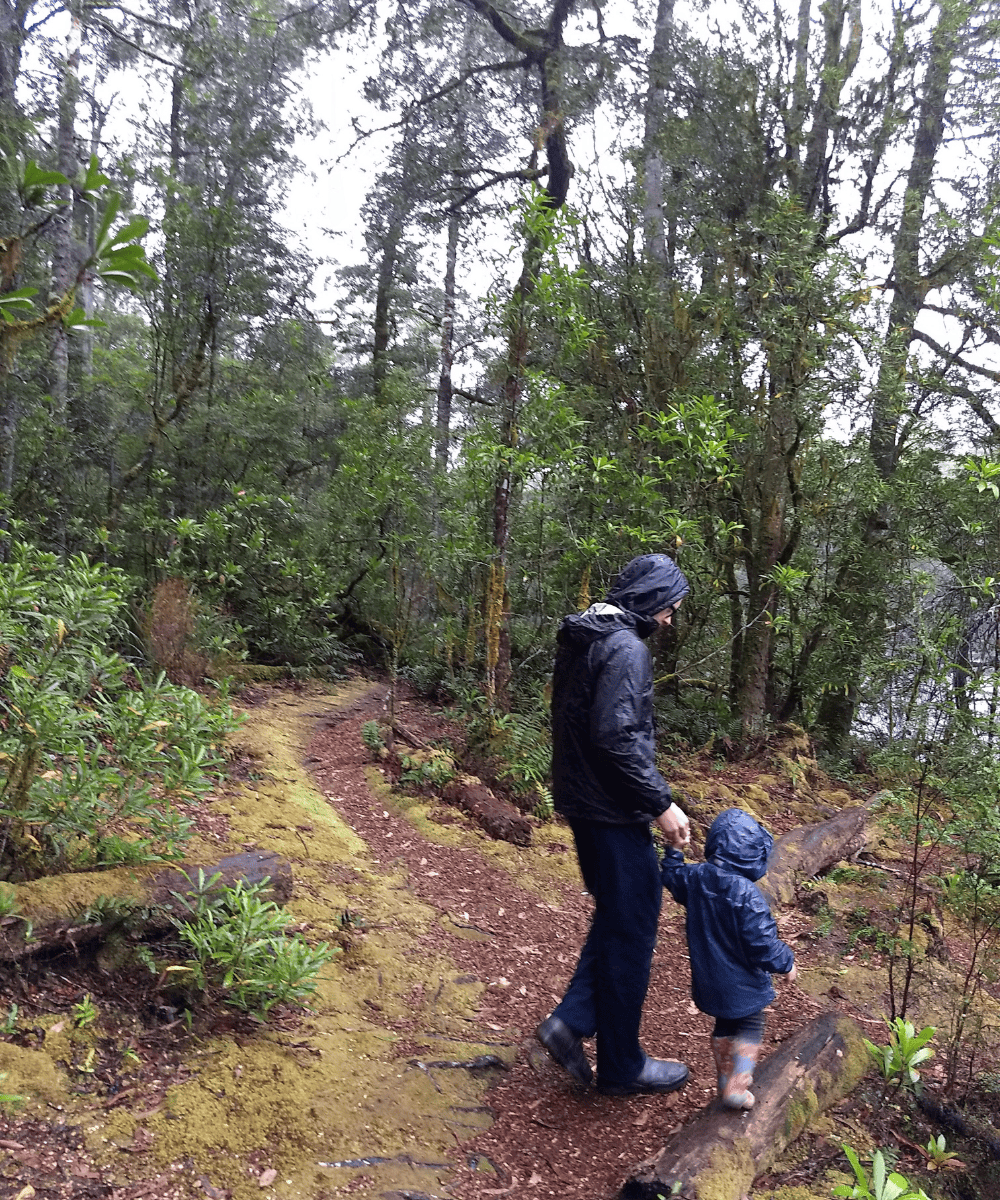
Doing the challenge made us think differently about getting outside in all kinds of weather! @tinyadventuresoften
Getting creative and gaining confidence
Sometimes we’d go outside exploring and take our time. Sometimes we’d take the more mundane activities, like eating dinner or folding laundry, outside to rack up hours. I quickly realized that if I took the kids camping, we could easily get eleven or twelve-hour days outside! These were all things that we already enjoyed doing, but having the goal of 1000 hours at the end of the year inspired me, pushed me, to be more creative, and to really prioritise getting outside.
And then I began noticing some changes. I noticed my kids becoming more physically confident. I also noticed our moods benefiting from being outside; the kids bickered among themselves a lot less when they weren’t confined to four walls. They showed much more initiative with their imaginative play, building cities out of rocks on riverbeds and money machines with dried leaves. Their creativity blossomed outside; they got better at unstructured free play, and they saw possibilities of play everywhere.
I also noticed my own confidence growing in my parenting and outdoor experiences. Where I may have been reluctant sometimes to try new things before, the challenge inspired me to take action and get outside. The more time I spent outside with the kids, the more confident I became. Time outside led to curiosity about our surroundings, which in turn led me to becoming more knowledgeable about the nature around us. We were all changing for the better.
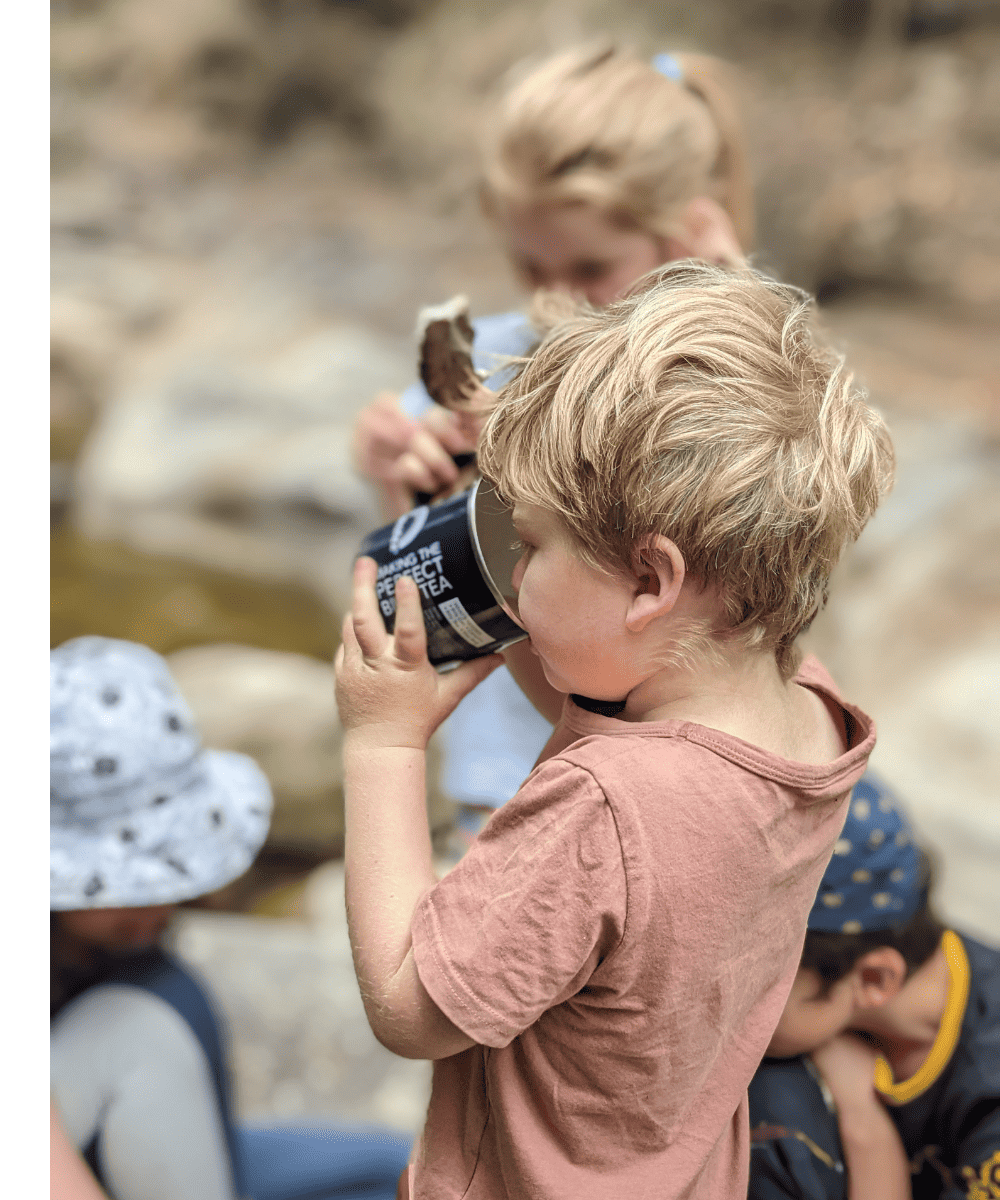
One of my tricks to get them outside: always carry the hiking stove for hot chocolate anytime! @tinyadventuresoften
Reaching our year-long goal
It turned out that even though I considered us a very outdoorsy family, hitting that 1,000-hour goal for the year was more of a challenge than I expected. It didn’t help that we spent nearly a whole month with one or more of us down with RSV during that August. That month we only scraped thirty hours outdoors.
February 18th was our start (and end) date though, which meant that we had nearly the whole of an Australian summer to get over the finish line. A week-long camping trip over New Year’s bumped us up considerably, and by the end of January (spent mostly at the beach), we’d reached the goal.
Hooray!
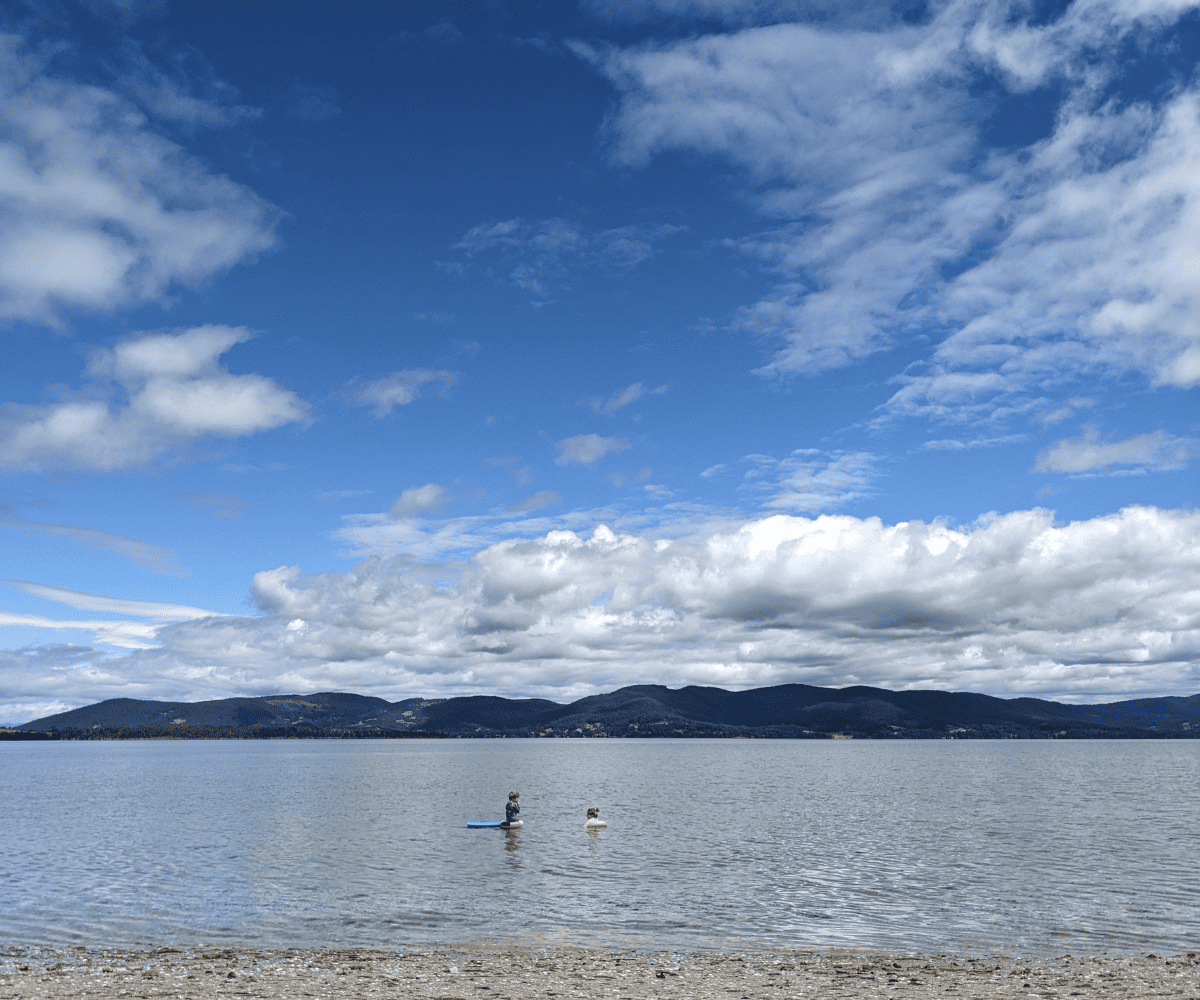
Spending most of summer at the beach was beautiful! @tinyadventuresoften
Working towards a goal as a family
Setting a long-term shared goal as a family can offer a wide range of benefits and can strengthen the emotional bond among family members. Working towards goals together creates a sense of unity and shared purpose. It also encourages open and effective communication, as family members need to discuss their aspirations, priorities, and expectations, leading to better understanding, teamwork, and empathy. Setting and pursuing goals can teach kids important life skills such as planning, time management, problem-solving, and resilience.
Benefits of family goals
Even though I chose to work towards that goal, there are benefits to setting a shared goal together as a family, such as:
- An increase in communication and teamwork, as you work together to achieve a common goal.
- Team building and bonding experience.
- The process of choosing and setting goals often involves discussing values and principles that are important to the family. This can help reinforce shared values and ethical standards.
- Inspiration and motivation. When everyone is working towards the same goal and aligned in their thinking, it is easier to stay on track and inspire each other.
- Creating memories by trying new things together.
- Family goals related to health and wellness, such as exercising together or eating healthier meals, can encourage the development of healthy habits that benefit everyone.
- Pursuing family goals often requires spending quality time together. This can strengthen relationships and create lasting memories.
- There’s often increased awareness of each other’s needs and interests. When families brainstorm together different challenges and ways to meet their challenges, each family member will bring to the table things that are important to them. This can lead to everyone being aware (and having to take into account) others’ needs.
- Flexibility and adaptability. Family goals can be adjusted and adapted over time to accommodate changing circumstances, schedules, and evolving family dynamics.
- There is a joint sense of accomplishment and joy when the goal is reached (and a lot of fun celebrating)! Achieving shared family goals creates a sense of achievement, pride, and a boost of self-esteem among family members.
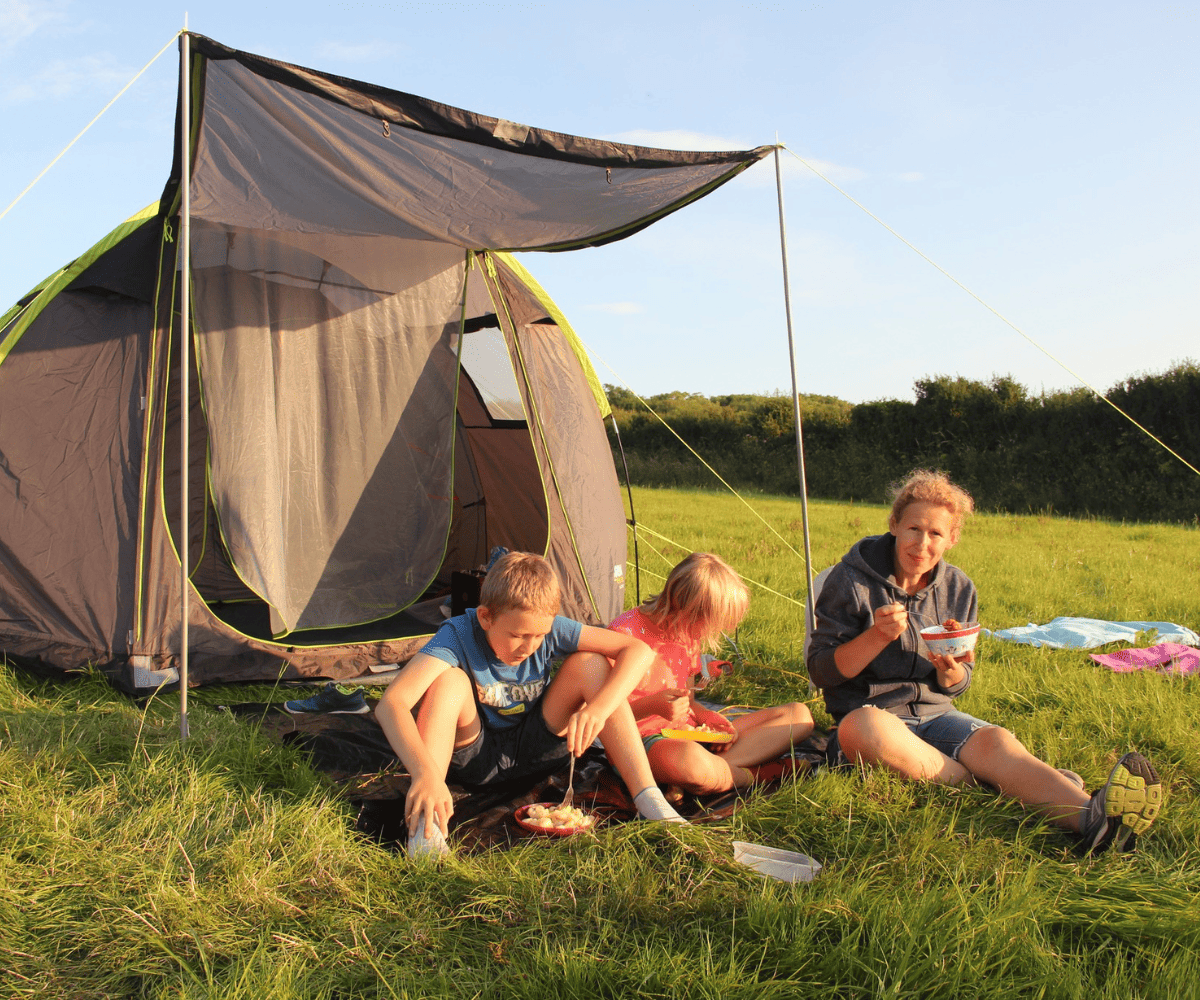
Creative Team member Anna from @celebrating_my_boys_journey enjoying a family camping picnic.
Making the decision to do a family challenge
Embarking on a year-long family challenge can be an exciting and rewarding experience. If this is something that you want to try, you’ll want to begin by initiating a family discussion. Gather all family members together to talk about the idea of a year-long challenge. Make sure everyone has a chance to express their thoughts, concerns, and ideas.
Next, you’ll want to clearly define the purpose or objective of the challenge. What do you hope to achieve as a family? This could be related to health, fitness, learning, hobbies, or personal development. Based on the purpose, you can set clear and specific goals for the challenge. These goals should be achievable within a year and measurable so that progress can be tracked.
Finally, you’ll want to create a plan for tackling the challenge and establish any rules or guidelines that you want to include. This may mean you’ll need to consider the daily, weekly, or monthly activities or tasks required, put together a timeline specifying when you will start and finish the challenge, procure any necessary resources or equipment, and have a contingency plan for obstacles or setbacks. If the challenge involves rules or guidelines, make sure you define them and communicate them to all family members. This could include how progress will be measured/tracked, what constitutes success, and any consequences for not meeting goals.
Encourage kids to help choose a family challenge
Kids love to feel valued for their opinions and for the role they play in the family model. Encouraging them to come up with their own ideas around setting a family challenge, and choosing one together, will give them even more motivation to achieve the goal.
At the dinner table recently, I talked to my kids about our next family challenge. I gave them a few ideas, and we talked about our interests, what was important to our family, and what was coming up for us in the year.
Together, we decided to work towards a goal of spending 20 nights camping together over the next year. I love this choice! Both kids were excited about all the options and places we could camp. My daughter has asked for more time spent in a standard tent rather than our usual rooftop tent, which I think will be a nice way to mix up our routine. I’m already looking forward to all the lifelong memories that this challenge will create for us and the stories that will come out of these 20 nights!
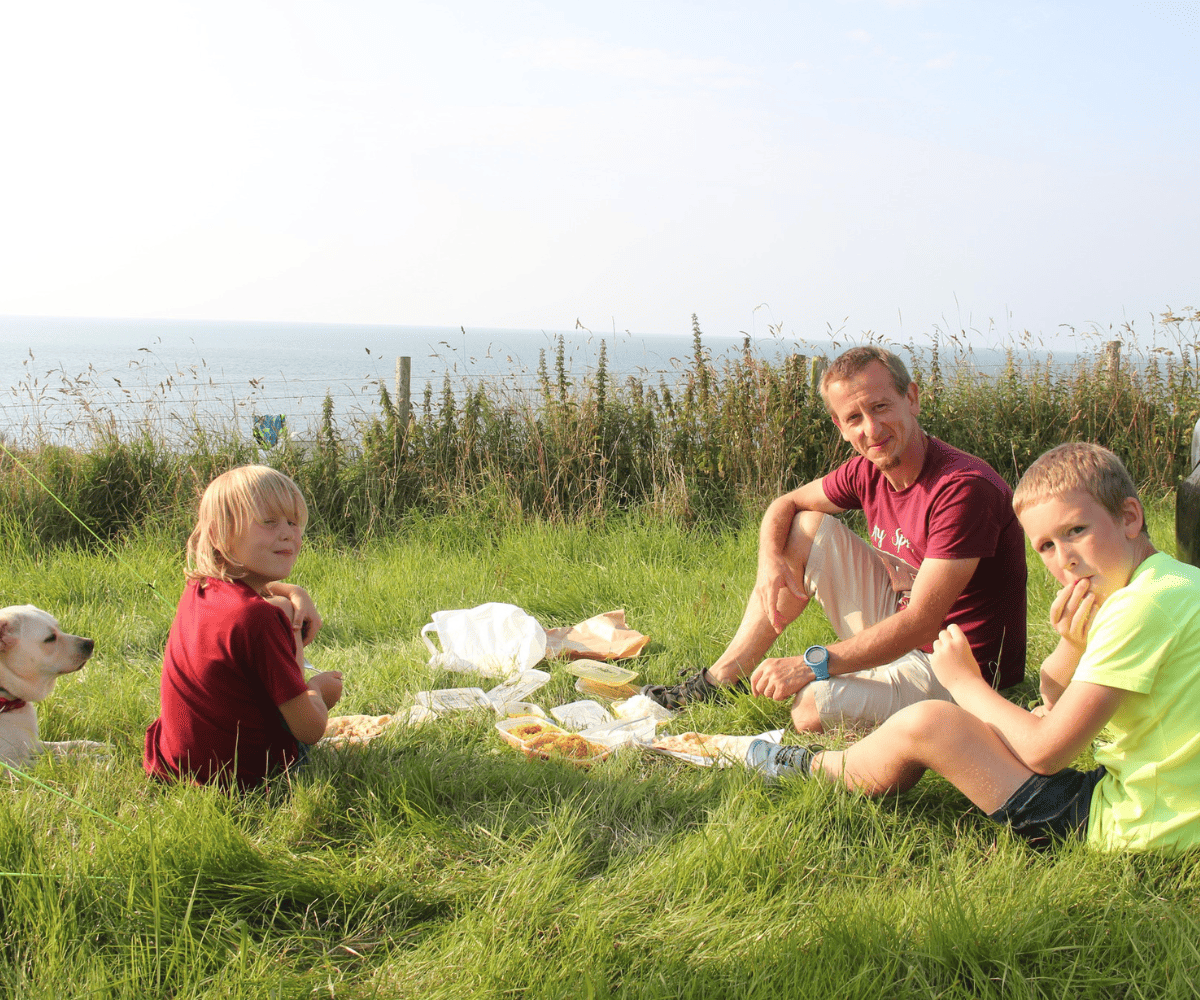
A scenic family picnic outdoors, from @celebrating_my_boys_journey
Ideas for year-long family challenges
When it comes to setting a family challenge, the options and possibilities are endless. You could design a family challenge around whatever hobby, activity, or interest you have. You could choose to focus on perfecting one thing, or an open-ended challenge that gives you flexibility to do all kinds of things! There’s no right or wrong answer; no one size fits all challenge.
If you’re having trouble thinking of a challenge that resonates with you, consider the following ideas as a sounding board to get you brainstorming. Just add the number/goal that you think would be a good challenge for your family.
- The Humans Outside 365 Challenge – spend 20 minutes outside every single day for a year
- Books read per month or year – choose a number of books to read each month or a total number to read over the course of the year
- 52 Hike Challenge – one hike per week, for an entire year
- 100 Blue Hours Challenge – spend 100 hours in blue spaces over the course of a year (created by Run Wild My Child Team Member Bethany)
- State parks challenge – visit all the state parks in your state in a year
- Pounds of rubbish picked up from public parks and beaches – set a goal to pick up a specific amount of trash from public spaces over the year
- Meals eaten outside – set a goal to eat a set number of meals together outside (picnic style, over the campfire, on a patio, on the trail, etc.)
- Miles walked, hiked, cycled, or paddled – choose a number to hit over the year
- Alphabet adventures challenge – go through the alphabet and choose adventures and activities that correspond with each day’s letter (A = aquarium, B = bike ride, C = camping)
- Times you visit a new place – set a goal to get out of your comfort zone and visit some new places this year
- Hours spent volunteering in the community – set a goal to spend time doing service projects, acts of kindness, volunteering, etc. as a family
- New skills learnt/attempted – set a goal to see how many new outdoor skills you can learn over the course of a year
- Geocaching quest – challenge your family to find a certain number of caches over the year
- Birdwatching expedition – develop an interest in birdwatching and aim to spot a certain number of bird species throughout the year (keep a family birdwatching journal to record your findings)
- Nature photography challenge – take up nature photography as a family hobby and aim to capture the beauty of your outdoor experiences and create a family album or calendar
- Project 365 – take one photo a day of your kids (and/or your outdoor adventures) every day for a year (you’ll be amazed how much your photography improves)
- Year of the moon challenge – observe and connect with the moon during its full and new phases over the course of a year through stargazing, learning about lunar phases, and each month’s name (e.g. Wolf Moon, Strawberry Moon) and meaning
The possibilities are endless!
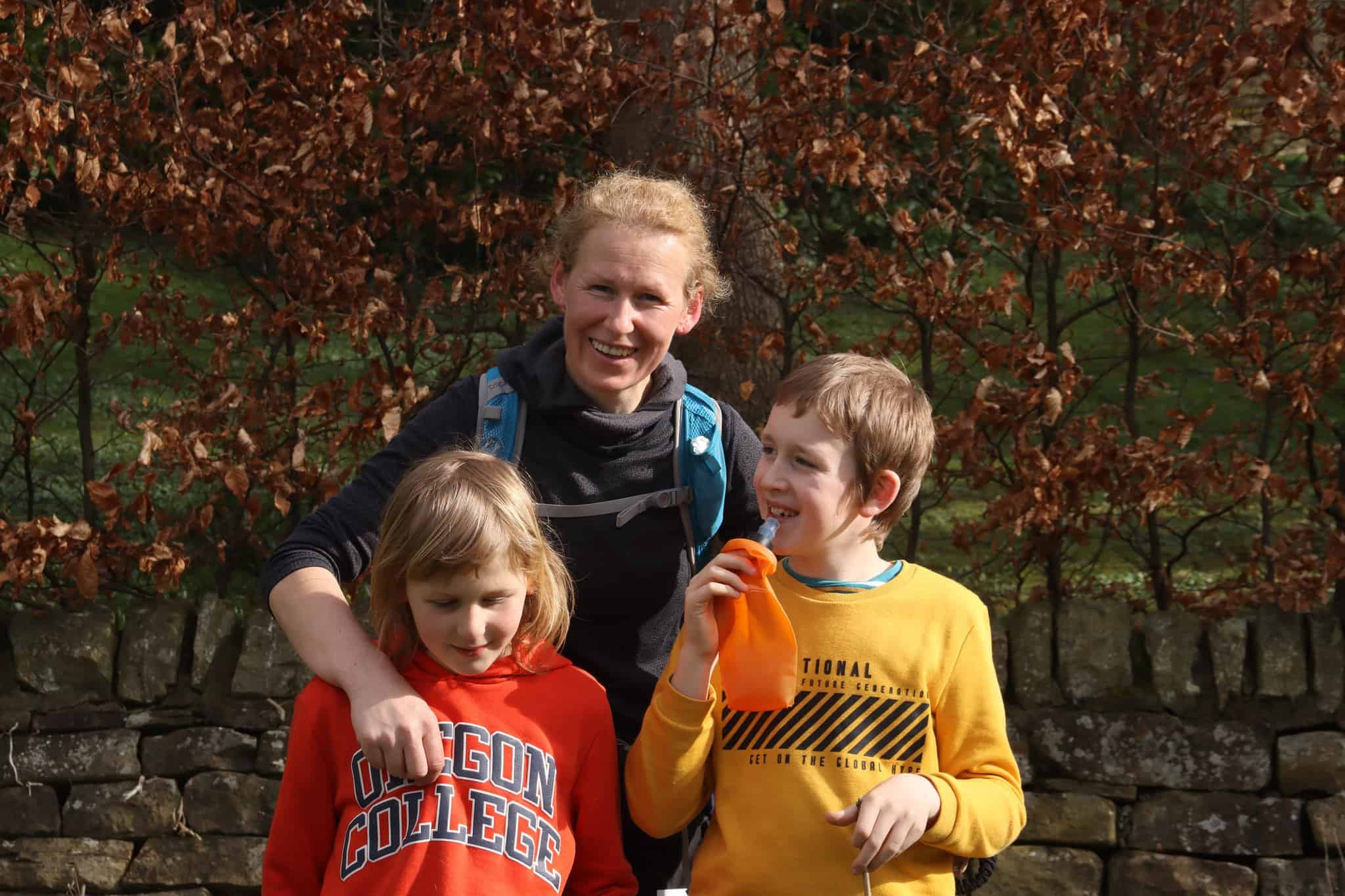
Creative Team member Anna celebrating with her sons after finishing a marathon. @celebrating_my_boys_journey
Celebration ideas for when you reach your goal
With family challenges, the most fun part is the journey and working towards the goal together. However, the celebration at the end makes it all the more worthwhile. This is a great opportunity to have a lot of fun and an excuse for a family party.
It’s also a great idea to start planning the celebration at the start of your goal planning, so everyone has it in the back of their minds as they work towards achieving their goal. Here are a few ideas to celebrate the end of a family challenge:
- Make a cake in the theme of your challenge (for example, a bicycle cake for a cycling challenge)
- Each family member dresses up as their favourite book character and makes a meal from their favourite book (for a book-themed challenge)
- A “glamping” experience as a treat for a camping-themed challenge
- A trip to somewhere the kids have wanted to go for a long time but haven’t had the opportunity
- Have a movie night, with the movie related to the theme of your challenge
- Have a family award ceremony and hand out awards for each member’s accomplishments
- Make a family donation to a charity related to the theme of your challenge
- Have your kids invite their friends over for a celebratory party
- Let your kids pick out new books at the book store, or new camping equipment at the outdoors centre
Extra tips for more learning through challenges
For parents who are homeschooling or anyone just wanting to add another layer to the family challenge, consider these ideas to incorporate more areas for learning opportunities.
- Have your kids journal their experiences with each step they take towards achieving their goal.
- Ask local businesses or members of the community to sponsor your challenge. Once you’ve reached the end of the challenge, they might be willing to donate to a local charity on your behalf.
- Alternatively, the kids could raise money for a charity along the way.
- At the very start of the challenge, have your kids write down what they think might be the hardest part, and the easiest part, of the challenge. At the end, have the kids read out their predictions and see how close they were to reality.
- Loan books from your local library on the theme of your challenge, or invite guest experts to share their knowledge with your family. This could be a friend, neighbor, or professional in a field related to your challenge.
- Set aside a designated time each week for family meetings. Discuss what you’ve learned, share interesting facts, and plan future learning activities.
- Assign family members topics to research and present to the rest of the family (or places to explore, or where you should camp, etc.). This encourages public speaking, research skills, and persuasion.
By infusing your family challenges with learning opportunities, you not only achieve your challenge goals but also foster a culture of continuous learning, curiosity, and personal development within your family. These experiences can create lasting memories and a strong foundation for lifelong learning.
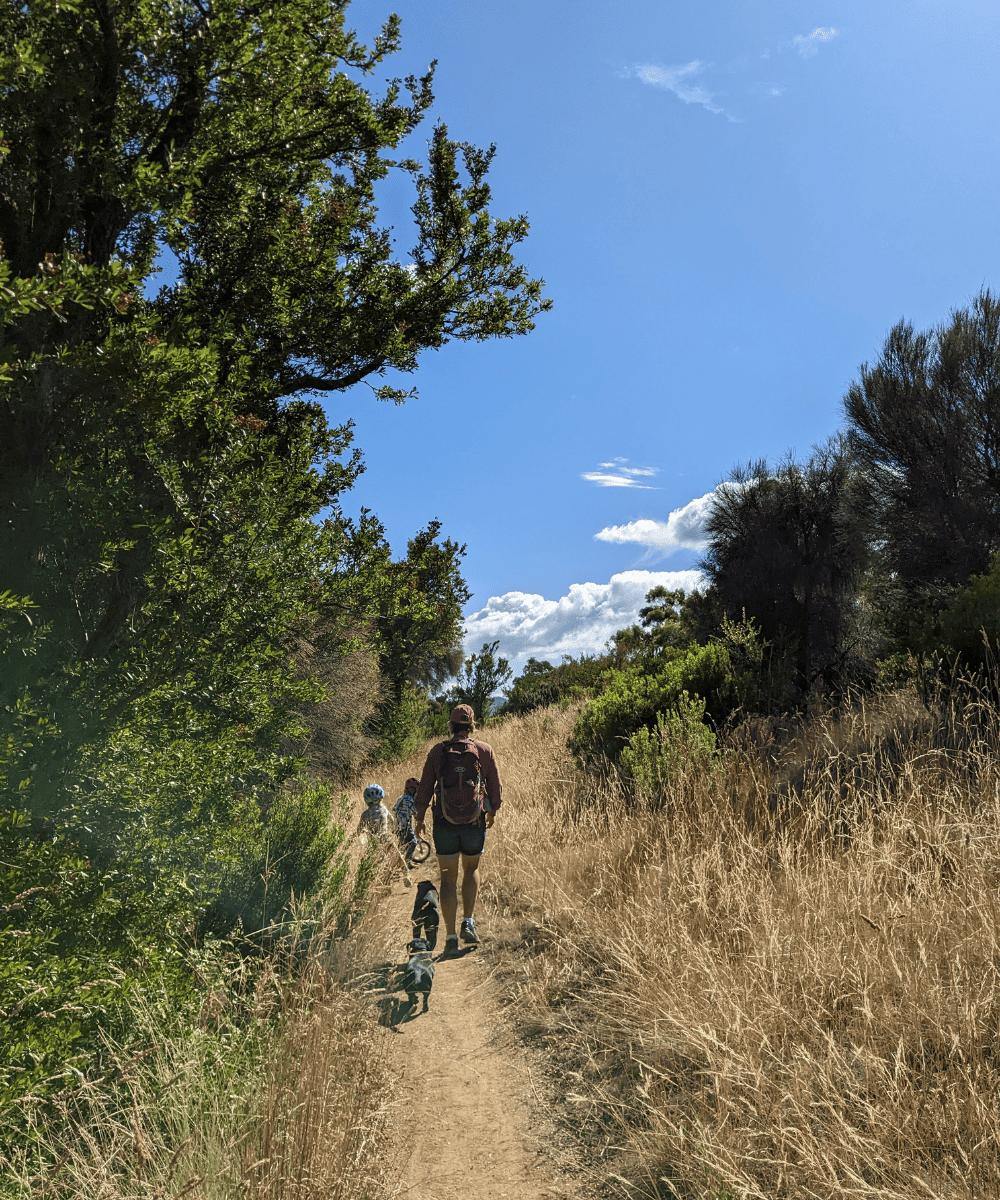
Blue skies, pets, and bikes. Perfect! @tiny.adventures.often
Including friends and your wider community
Challenges don’t have to be confined to your immediate family. Once you’ve landed on an idea, why not put it out there for friends and family to join in if they want to? Including friends and extended family members in your year-long outdoor family challenges can enhance the experience, promote social bonding, and create lasting memories.
The team bonding could extend to cousins, school buddies, and even grandparents. You could put a notice on your local online community noticeboard, and if enough people want to join in, you could even create a new group where you can inspire each other and share your achievements. The more people on board with the challenge, the bigger the celebration can be at the end!
Feel free to collaborate on specific challenges or activities with friends and family. For example, you could plan joint camping trips, hiking expeditions, or outdoor fitness sessions. These could be monthly or quarterly gatherings dedicated to challenge-related activities. You could also organize friendly competitions or challenges between your family and another family or group of friends. This could include sports, games, or outdoor races. Or, dedicate specific days or weekends throughout the year as “Family Challenge Days” where friends and extended family are encouraged to participate. Plan a range of outdoor activities and games related to helping your family meet your goal.
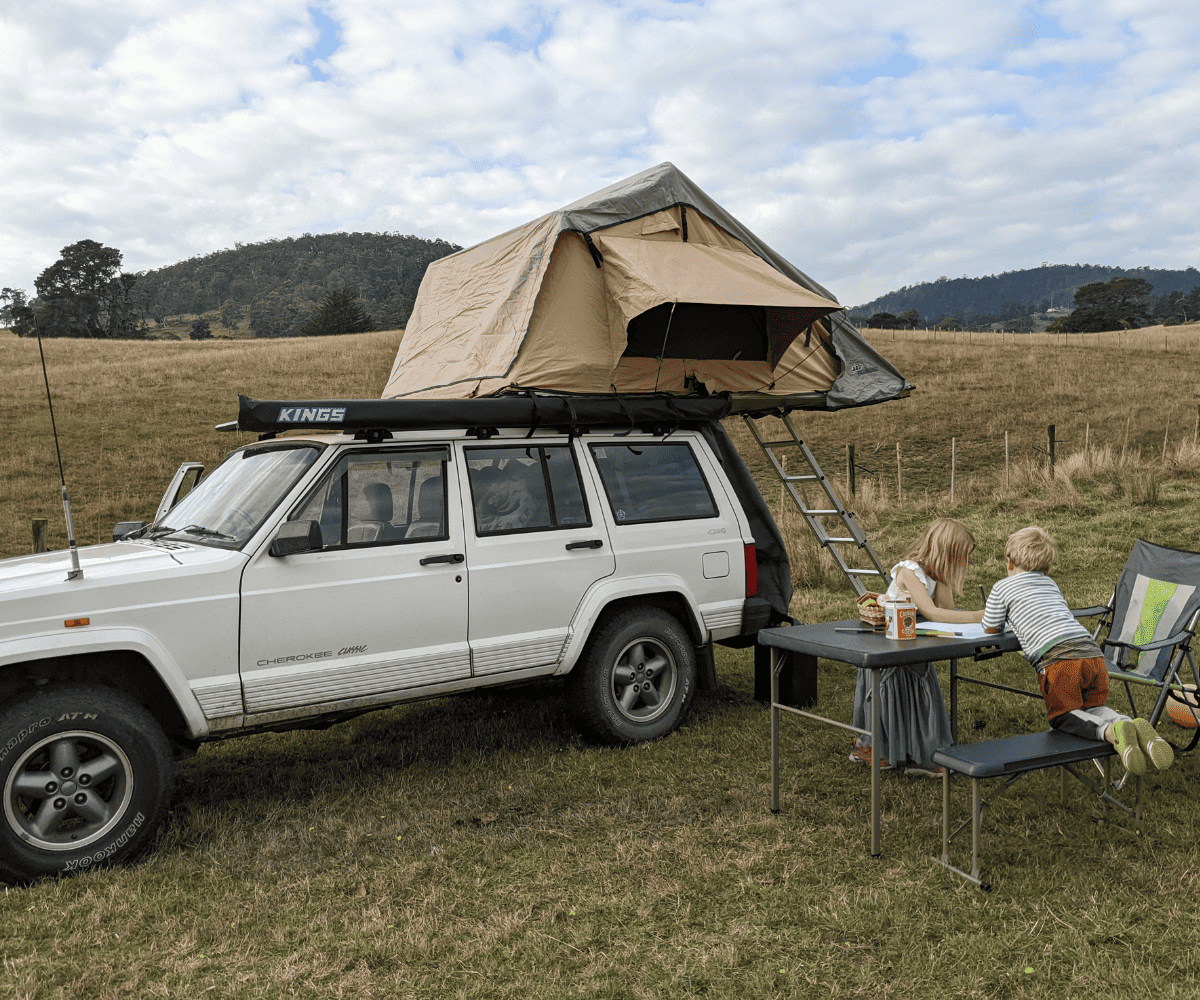
We’re excited for more nights spent camping, even with basic set ups in the back paddock like this one! @tiny.adventures.often
How to turn a failed challenge into a win
While it’d be great to always be able to complete your family challenges, that may not be the case. Unexpected circumstances may come up causing you to fall short of your goal, or something may happen during the year to derail you or shift your goals. That certainly doesn’t mean the experiment was a failure. Even when a year-long family challenge falls short of completion, you should recognize that the journey itself is a resounding win. The memories created throughout the challenge, whether they involve laughter during outdoor adventures, heartwarming moments shared around a campfire, or the resilience displayed in the face of setbacks, are invaluable treasures that will be cherished for years to come. These shared experiences strengthen family bonds, forge deep connections, and build a reservoir of shared stories that become part of your family’s unique history.
Moreover, a failed challenge can often lead to the establishment of enduring traditions and habits. It’s an opportunity to reflect on what went right and what could be improved, allowing you to adapt and continue refining your family’s approach to future challenges. The persistence and determination demonstrated in the face of adversity are powerful life lessons for every family member, fostering personal growth, resilience, and a spirit of perseverance. In the end, while the ultimate goal may not have been achieved, the immeasurable value of the journey, the traditions formed, and the growth experienced make every family challenge, whether successful or not, an undeniable triumph.
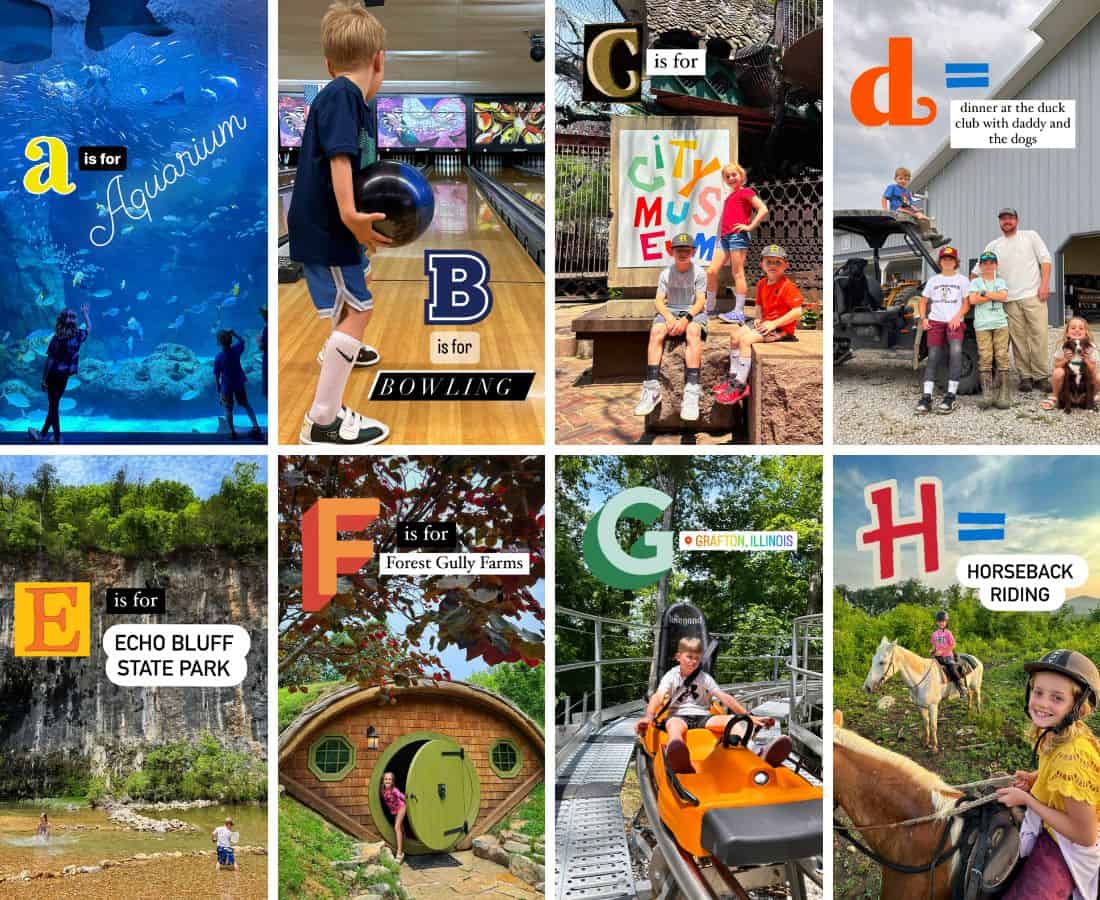
Sara McCarty’s family did an Alphabet Adventure Challenge this year and correlated their activities to a letter of the alphabet – via @sara_mccarty
Making a family challenge a tradition
If you loved your year-long family challenge and want to try another one the next year, you may be onto something! Your year-long family challenge could easily turn into a cherished tradition that evolves with your family’s interests and needs. Setting personal challenges has been my tradition every time New Year’s Eve comes around (not that I think any challenge has to be tied to a calendar year), but now I love the idea of bringing this to our family and getting the kids involved.
To begin, take a good look at how last year’s challenge went – what went right, what was hard, what would you like to do differently. Use this feedback as the foundation for selecting the next year’s challenge. By involving every family member in the decision-making process, you ensure that the challenge aligns with everyone’s interests and aspirations.
As you embark on each new challenge, infuse it with elements that promote togetherness and create lasting memories. Incorporate traditions and rituals unique to your family, such as a special kickoff event or a symbolic gesture at the challenge’s conclusion. These rituals will help solidify the challenge as an annual tradition that carries emotional significance.
Having successfully completed the 1000 Hours Outside challenge as a family, I got excited to bring my kids into the tradition as well. Although we aim to keep up the tradition and mentality of spending as much time as we can outside, I thought it was time for a new challenge for us. That’s why we discussed it as a family and decided on our new camping challenge. I’m SO excited to start working towards our goal!
Have you ever tried a year-long family challenge?
What challenge would you like to try next?
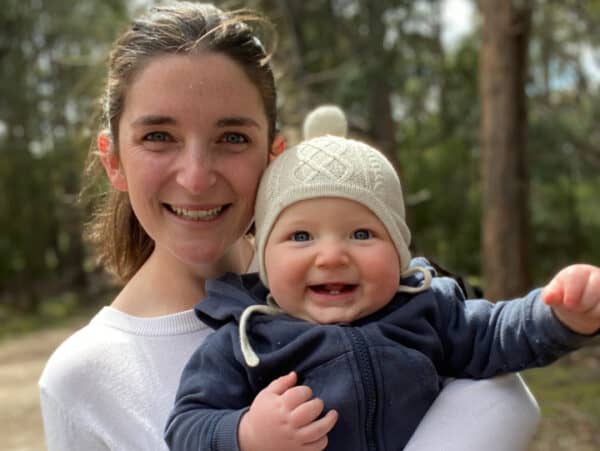
About the author
Jacqui and her two intrepid kids call that little island on the bottom of Australia home. Most people know it as Tasmania, but in the indigenous language of palawa kani, it is known as lutriwita, and it is a stunning place to live and explore. In a way, Jacqui lets the local landscapes be her co-parent, having realized early on in her parenting journey that the kids are happiest when they’re outside. Jacqui has a background in natural health, but these days she’s hung up that hat to parent full-time while the kids are still young. You can usually find them at a beach, rock-hopping, hiking, camping, jumping into rivers, or sipping chai teas while the sun rises. Among friends, Jacqui is known for never going anywhere without a Jetboil, telling long stories, having her head in a book, and whisking the kids away on ambitious adventures.
You can find more from Jacqui online in the following locations:
Instagram: @tiny.adventures.often
RWMC posts: Jacqui Hazell

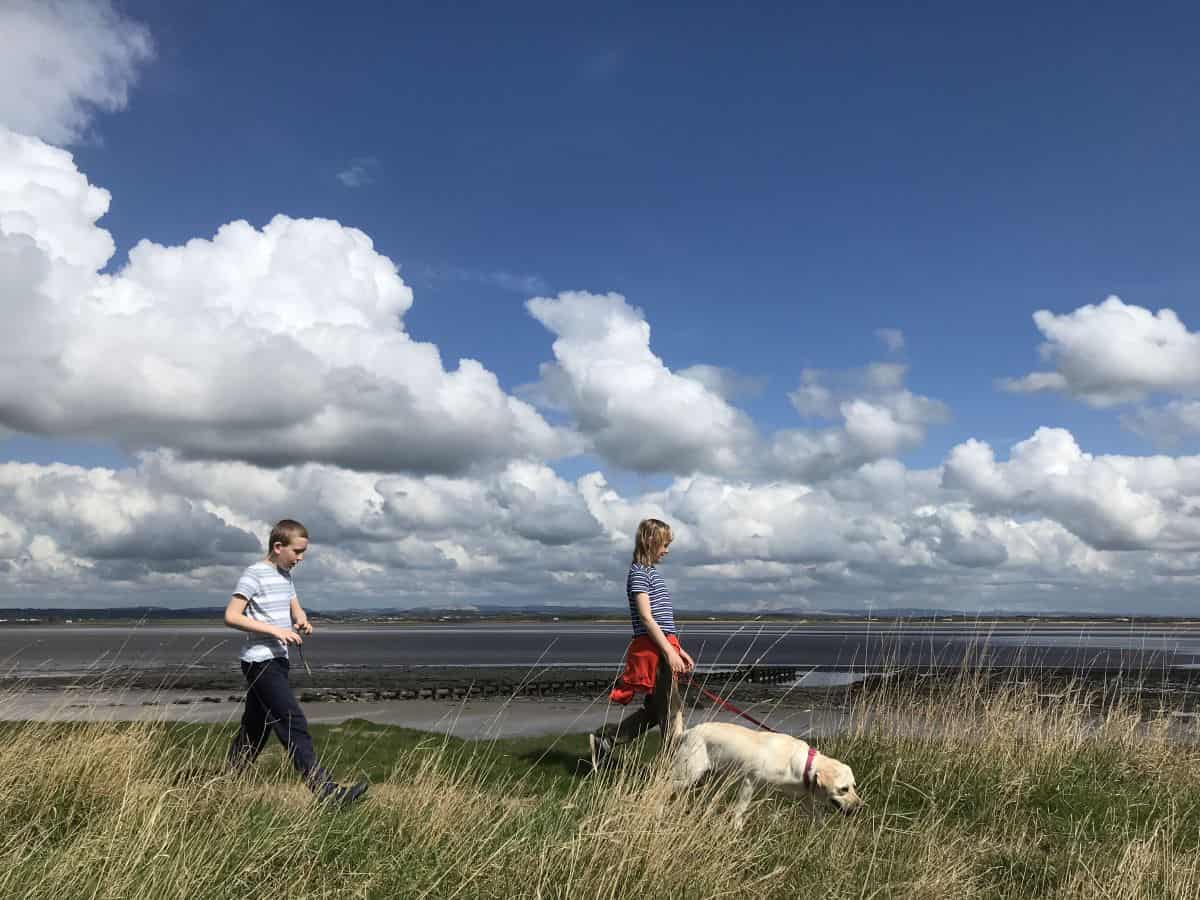







Congrats on hitting 1k hours. That was our goal this year as well and I don’t think we’ll hit it but it’s definitely helped us get outside so much more, and I’m inspired to do even better next year! I love the idea of weaving tradition into it, we love to camp so I’d love to think of some ways to make it more intentional for us all!